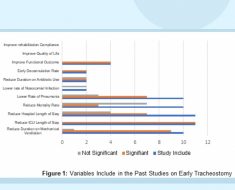Working from home: Performance coach provides exercise tips
When you subscribe we will use the information you provide to send you these newsletters. Sometimes they’ll include recommendations for other related newsletters or services we offer. Our Privacy Notice explains more about how we use your data, and your rights. You can unsubscribe at any time.
Simon Reynolds worked at the Formula One Team McLaren for over a decade as a Driver Performance Manager. Now the sports therapist has spoken exclusively to Express.co.uk to detail how to reduce back pain for long-haul drivers. Having managed the athletic development of F1 racers Kevin Magnussen, Alex Albon, Heikki Kovalainen and Stoffel Vandoorne, Reynolds will share his tricks of the trade.
Get set, go
Reynolds expressed the gravity of seat ergonomics when driving long distances.
Prior to setting out on a long journey, you can prevent neck and back pain by “ensuring you have full visibility of the road and can look comfortably at the mirrors”.
“Recline the back rest to maintain a neutral spine,” he advised, but not too far.
An unsupported head and upper spine can potentially lead to greater tension and back ache over the length of the journey.
“Sitting may cause the pelvis to rotate backwards,” Reynolds explained, which is why “lumbar support” is paramount.

“Use a thin cushion to help maintain natural curvature” in the lower back – this can be a way to prevent pain further down the line.
“Adjust the headrest, so the top of head is level,” he continued, adding information about positioning.
“Position the seat so that when both the brake and throttle pedal are pressed, a slight bend to the knee is maintained and your bottom remains snug in the seat and backrest.”
When it comes to a comfortable steering position, Reynolds said: “Elbows should be at a slight bend at the nine and three o’clock position on the steering wheel, and shoulders should remain in contact with the seat.
DON’T MISS
Sabine Schmitz had three-year battle with cancer – seven signs [INSIGHT]
AstraZeneca vaccine: MHRA issues list of clotting symptoms [TIPS]
AstraZeneca vaccine: Van Tam shows risk of harm for each age group [ADVICE]
“The steering wheel height may also need adjusting to help prevent the shoulders from hunching, which may lead to increased tension and/or pain.”
To help prevent stiffness, Reynolds shares his little secret – he awakens the gluteal (bottom) muscles by “squeezing them together 10 times and holding each repetition for two counts”.
“This helps relieve any discomfort in the lower back and means when you step out of the car, you can do so more easily,” Reynolds added.
“Small movements every 20 minutes may help prevent neck and back pain,” he suggested, although he stressed: “Maintain focus on the road at all times.”

Reynolds highlighted the importance of taking regular driving breaks to prevent back pain and reduce tension.
If able to do so, Reynolds recommended taking a break every hour of driving.
“When taking a break at a service station, step out of the car slowly and allow your spine to adapt to a standing position,” he said.
“Next, walk around for a few minutes to help mobilise the hips and pelvis, which alone will help reduce any aches or pains.”

For drivers who are really feeling the ache, Reynolds has four exercises which might help. These are:
- Trunk rotations
- Arm raises
- Bottom clenchers
- Chair squats
Trunk rotations
“Find a bench, sit upright, with knees bent at approximately 90-degrees, feet firmly on the ground, and hands placed on the thighs.
“Gently rotate your torso to the left to a comfortable range, whilst sliding the right hand down the thigh towards the knee. Repeat on the right side. Perform five to 10 reps each side.”
Arm raises
“Perform seated or standing with good posture. If standing, maintain a slight bend in knees.
“Gently raise your arms out to the side and overhead with your palms facing forward.
“If you have difficulty raising overhead, simply raise to shoulder level. Perform: five to 10 reps.”
Bottom Clenchers
“Perform seated or standing. If standing maintain a slight bend in knees.
“Simply clench your bottom muscles and hold for two-five counts, while at the same time tightening the mid-section. Perform five to 10 reps.”
Chair squats
“Place your feet approximately shoulder width or slightly wider, with toes slightly pointing outwards.
“Next, whilst maintaining a neutral spine, tighten the midsection and simultaneously bend the hips and knees to lower down to lightly touch a chair or bench with your bottom.
“Ensure the knees do not collapse inwards and remain inline with toes. Perform five to 10 reps.”
Simon Reynolds is the current director of Formula to Perform Ltd and is working alongside Motorsport Tickets – the UK’s leading motorsport ticket provider.
Source: Read Full Article





